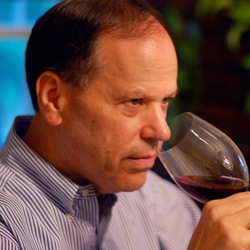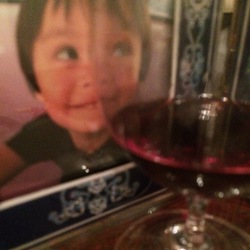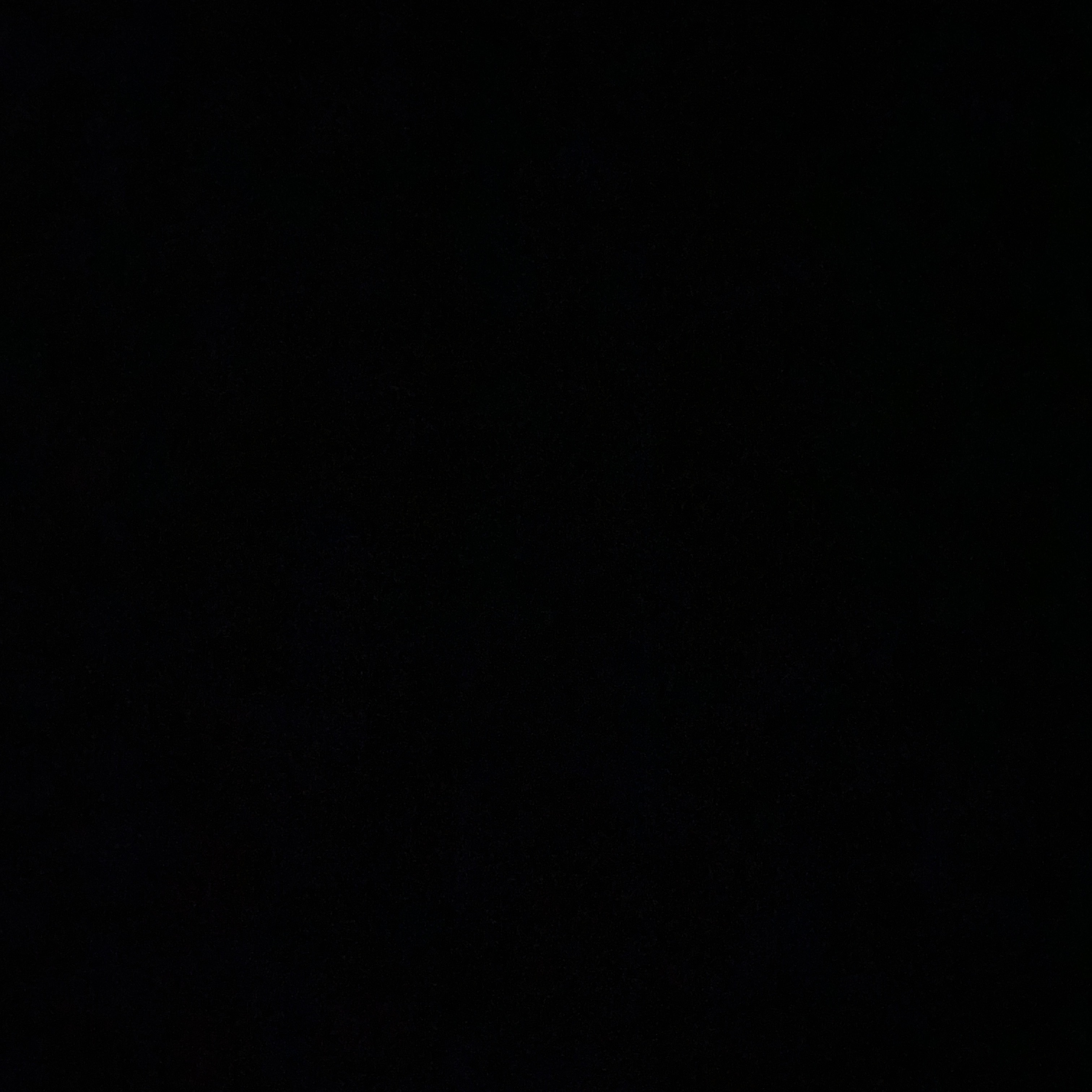Cellar Classified
Château Paveil de Luze
Margaux Red Bordeaux Blend 2012
A powerful, authoritative wine, the 2012 Paveil de Luze is shaping up to be one of the under-the-radar gems of the year. Earthy and smoky notes add nuance, but it is the wine's explosive, deep personality that stands out most. Expressive floral, savory and ferrous notes meld into the expressive finish. Although the 2012 is more power than finesse, it offers exceptional balance and tons of personality. The blend is 70% Cabernet Sauvignon and 30% Merlot. This is an impressive effort from Paveil de Luze, a Margaux property that could probably be a classified growth. Simon Blanchard is the consulting winemaker. (Antonio Galloni, Vinous) — 9 years ago
Chateau Lespault Martillac
Pessac-Léognan Red Bordeaux Blend 2010
Maybe not a classified growth, but a fully recommended example of ready to enjoy Bordeaux. Cedar and young fruit on the nose. Full rounded tannins. — 10 years ago
Raventos i Blanc
L'hereu Conca del Riu Anoia Macabeo-Xarel-lo-Parellada 2012
Non-classified cava ... Stunning, streets ahead of the standard garden variety cavas — 10 years ago
Château de la Louvière
Pessac-Léognan Red Bordeaux Blend 1990
Classic left bank. Herbal, complex, balanced. Total sleeper, held up well against the classified growths. — 11 years ago
Michele Chiarlo
Cerequio Barolo Nebbiolo 2007
They make 1000 6 packs of this wine from one of the most famous vineyards on the piedmont which was classified as a cru in 1880 very pretty bouquet of dried flowers red licorice spice truffles a complex array of spice earth and red berry fruit. Fine grain tannins with silky velvety texture vey fresh and bright cherry fruit red licorice spice and pretty floral notes very spiced and long finish tongue tingly acidity. — 12 years ago
Château Clos St. Martin
St. Émilion Red Bordeaux Blend 2006
Clos St. Martin was established in 1850 and named after the neighbouring church of Saint- Martin. Clos St Martin is just 1.33 hectare and is the smallest classified growth in Saint-Émilion. An interesting lighter style Bordeaux. Dark berry fruit aromas, earthy herb spice. On the palate complex black fruit flavors and espresso notes. Soft tannins, smoky oak, medium+ finish, earthy mineral ending. Drink now. — 8 years ago
Domaine Jean Michel Stéphan
V.S.O. Red Blend 2011
Bam! Olives and bacon right out of the bottle. I understand this is Pre classified cote rotie. 90% Syrah. 10% Viognier. Medium full. A bit cloudy. Over 3 nights tasted several nuances of smoked meats, rustic farm vegetables, and interesting barnyard smells. A little rough, but Loved it. — 9 years ago
Château Grand-Puy-Lacoste
Pauillac Red Bordeaux Blend 2012
Deinking quite well. Not a powerhouse vintage, but is clearly of classified growth quality greater than its 5th designation — 10 years ago
Château Beau-Séjour Bécot
Saint-Émilion Red Bordeaux Blend 1988
Very nice bottle, a great wine matching very well with all the other classified. — 10 years ago
Domaine Vincent Prunier
Meursault Chardonnay 2008
Located in Cote de Beaune, south of Volnay and north of Puligny Montrachet. Meursault ("Murr-so") has historically been Burgundy's center for white wine production. In fact, nearly all of the 2.5 million bottles produced from 440 ha (1,090 acres) are whites. The soil is a mixture of marl and chalk and is perfectly suited to the production of chardonnay. Meursault wines are known for aromas of hazelnuts, honey and vanilla for its aromas and creamy, almost olive oilllike texture. There are no grand crus in Meursault, though Les Perrières, Les Genevrières and Les Charmes produce remarkable wines. Further, some of the most well-known vineyards of Meursault such as Narvaux and Limozin are not premier cru but Villages-classified vineyards. Recent top vintages include 2008, 2007, 2005, 2002, 1999, 1996, 1993, 1990.
With 437ha. of vineyards dedicated to Villages wine or Premier Cru, Meursault has the largest area permitted to be planted in white wine in the Cote-d'Or. Furthermore, despite the fact that the village lacks even one grand cru, Meursault has historically been Burgundy's center for white wine production, in the past even more so than Puligny-Montrachet or Chassagne-Montrachet. While much of those two villages had in the past been planted to red grapes, Meursault has always been white wine territory. In fact, the modern day vineyard of Les Combettes in Puligny-Montrachet, which forms a continuous chain with the premier crus of Meursault, was once considered part of Meursault and not Puligny, where the many nearby vineyards produced red wine. There are several important factors that determine the reputation of Meursault. Primarily, the soil throughout most of Meursault is perfectly suited to the production of chardonnay; it is a mixture of marl and chalk, that when combined with a largely east or southeast exposure creates healthy grapes that are full of character. Another factor correlates to geology, though in a very different way. Meursault's high water table allows its residents to carve deep, cold cellars "perfect for the production of wine" into the chalky, stony soil. So, while large negociants from Beaune dominated the production and marketing of Burgundy throughout time, Meursault remained a wine of its own citizens. Contributing to this, since red wine has been more prized throughout time, these same negociants looked elsewhere for sources because the wine of Meursault has always been white.
What makes the wine so special? The most common descriptors attached to Meursault are hazelnuts, honey and vanilla for its aromas and creamy for its texture. However, this simplifies things quite a bit. In most cases, Meursault despite an almost olive-oil texture is countered by a precise mineral character, stoniness and a more refined overall palate than, for instance, Chassagne-Montrachet. It's the unique stony/mineral character that often gets lost when tasting Meursault, as many concentrate on the ripe, hedonistic primary flavors and aromas. It's the bipolarity of the wine, the interplay of both factors, that makes Meursault one of the most sought after white wines in the world. As mentioned above, there are no grand crus in Meursault, though many would argue that Perrieres, Genevrieres and Charmes can attain these lofty heights in the hands of the best producers. Further, some of the most well-known vineyards of Meursault such as Narvaux and Limozin are not premier cru but Villages-classified vineyards, though again, the best examples are clearly of higher quality. source: http://www.burgundywinecompany.com/wines/display.php?subregion=Meursault — 12 years ago
Cavallotto
Langhe Nebbiolo 2014
Arguably one of the best value Langhe Nebbiolo wines there is. Young vine and de-classified fruit from the estate vineyard of Bricco Boschis, traditional to the core, classic aromatic and structural components. Finding this 2014 just a touch hot on the palate though. Dust, tar, rose, cherry, herbs, and leather. There's a dusty/dried character to the wine that charms with its rustic appeal. — 8 years ago
Ridge Vineyards
Estate Monte Bello Vineyard Cabernet Sauvignon Blend 2011
Aromas of cassis, blackberry, barrel spice, tobacco and dust. On the palate it's superbly balanced with layered blackberry, cassis, vanilla, and toasty oak flavors.Long finish. Well integrated sweet tannins. Essentially de-classified Monte Bello fruit. Great value! 2011 Vintage — 9 years ago
Haut-Condissas Prestige
Médoc 2009
Really surprisingly good wine. I would have guessed it to be a classified St. Julien. Complex and approachable. Excellent value. — 10 years ago
Amiral de Beychevelle
Saint-Julien Red Bordeaux Blend 2010
2010 dark ruby with ripe blackberry, tart cherry. Earthy with gripping tannins. Fairly typical 2nd wine of classified growth in great year. — 11 years ago
Château Lynch-Moussas
Pauillac Red Bordeaux Blend 2000
I am excited to try this Bordeaux for it is the original Lynch Bages before Lynch Bages became Lynch Bages. Lynch Moussas was split into two in the 18th century to form Lynch Moussas and Lynch Bages. Lynch Moussas was Classified as a Classed Growth by the 1855 classification. I believe it is considered a Fifth Growth. This wine is made up of 70% Cabernet Sauvignon and 30% Merlot. The aromas are of ripe plum, bakers chocolate, deep dark fruit. A totally beautiful bouquet. Big black currants, smooth ripe tannins, a nice smokiness, and well balanced. Medium + body, full mouth feel, with good dark fruit on the palate. This is a joy to drink and am very pleased with what I have found. — 12 years ago
Château Palmer
Margaux Red Bordeaux Blend 2010
1990 wild herbs fresh earth very complex array on the nose still some fruit menthol camphor smooth and silky texture some tannins still here lovely freshness. Most excellent 55 cab cf mr the rest 1998 a greatrightbank so Palmer jas a lot of merlot more than Antofagasta the classified growths similar nose fresh herbsandrhat month camphor smooth and another all and earthy soft tannins finish 40excellent +. 2010 currant and red cherry fruit with sweet tobacco spice a gravelly mineral note big and chewy with an earthy musty note but lots of everything structured and fresh finish 50+ most excellent+ — 13 years ago














Katerina
Only 1911 bottles of this Grand Cru Champagne are made each year and every bottle is numbered by hand. Though it is classified as a non vintage Champagne, the wines that make up the blend are actually from the 1995, 1996 and 1997 vintages.
Pronounced aromas of brioche, preserved peaches and white flowers. The palate is full and focused with lots of fruit and sweet spices. The finish is long and satisfying.
100 proc PN — 7 years ago